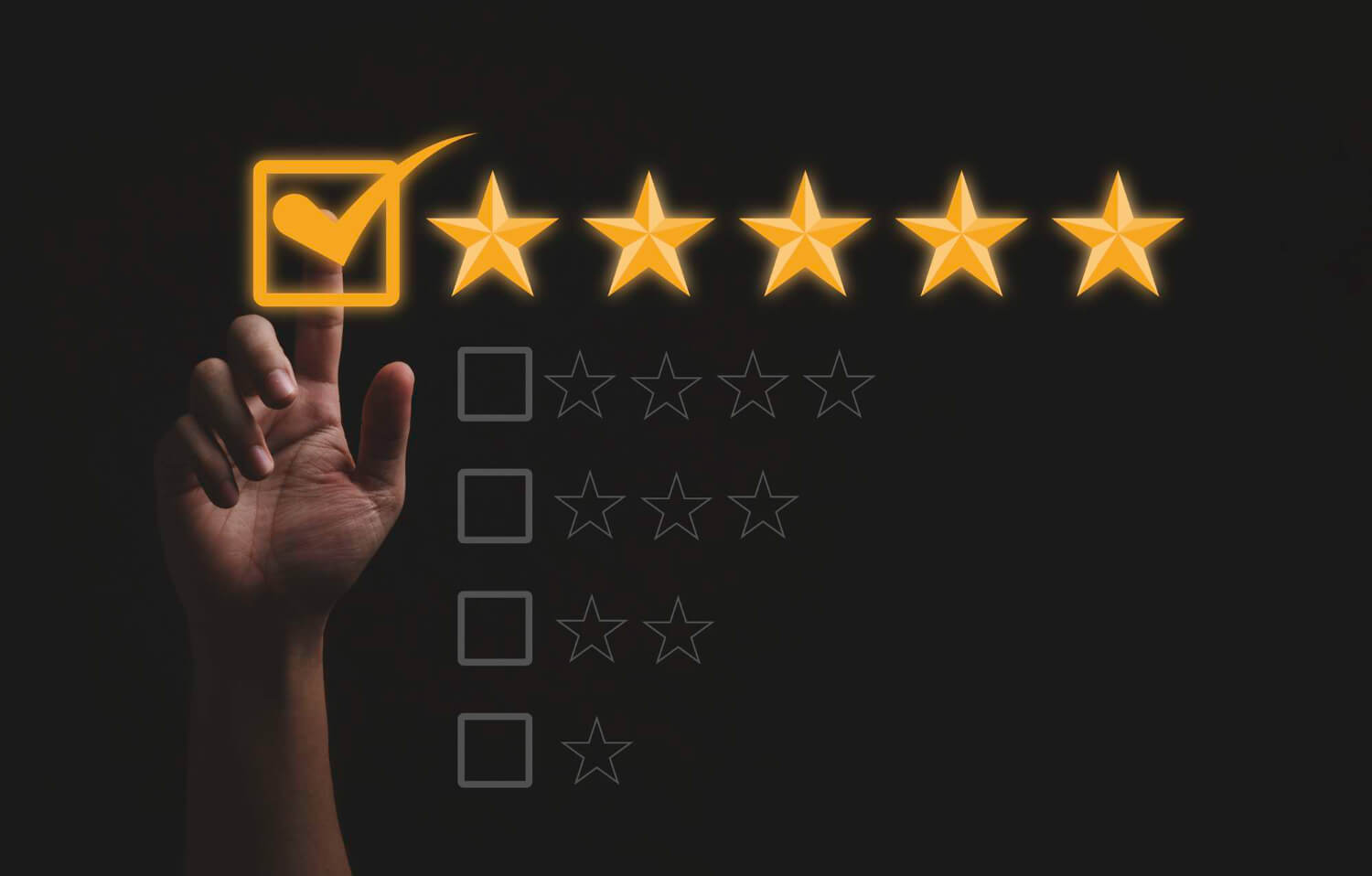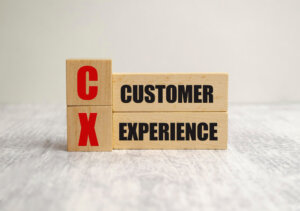Many businesses don’t concern themselves with online reviews, but these comments are an integral part of your overall success. This article looks at 60 unique facts and statistics showcasing why online reviews should be paramount in every business’s growth strategy.
Top 10 Online Review Statistics
- Only 5% to 10% of consumers write reviews
- 89% of consumers are ‘highly’ or ‘fairly’ likely to use a business that responds to all of its online reviews
- Only 7% of consumers say they’re ‘not at all’ suspicious of reviews on Facebook
- 34% of consumers only leave positive reviews
- 7% of consumers only leave negative reviews
- 85% of all reviews come from only four review sites
- Customers don’t trust companies with ratings below 4 stars
- 98% of people read online reviews for local businesses
- Businesses that claim free listings on multiple review sites make 36% more revenue
- 90% of customers read online reviews before visiting a business
Online Reviews and Their Impact on Businesses
Whether you like it or not, online reviews are the first thing customers want to see before ever visiting your store. No matter how amazing your website or physical location may be, individuals won’t even bother walking through the door if they don’t like the rating they see.
Low scores mean fewer customers, leading to diminishing sales and abysmal revenue numbers. Those with stellar reviews are prone to new customers based on a rating alone. Businesses maintaining ratings of 4 stars or more see significantly higher revenue numbers and customer retention.
Reviews also provide insight into the consumer’s mind. Any venture taking the time to read such feedback can see what shoppers enjoy and the areas they dislike. Addressing concerns while focusing on the good can have a considerable impact.
How Important Are Online Reviews?
Now more than ever, customers are looking to the internet for feedback before making decisions regarding a purchase. Nearly the entire population reads online reviews before buying products and services.
What those reviews say has a monumental impact on how customers react to your business. They’re more likely to trust businesses with online reviews than those who don’t due to an increased risk of the unknown.
Reviews speak volumes and carry just as much weight as a personal recommendation from a close friend. Conversely, negative feedback is enough to scare off all but the most stubborn customers from shopping at your store. It’s clear that online reviews have the power to make or break your company, especially if you’re just starting your business.
60 Facts & Statistics about Online Reviews
1. Only 5% to 10% of consumers write reviews (USA Today)
Of all consumers to make a purchase from your store, only 5% to 10% will take the time to write a review. What’s shocking is that even this low number still accounts for $400 billion in online sales revenue! Businesses encouraging more customers to review products will have more influence on other shoppers and the potential to generate even more revenue.
2. 89% of consumers are ‘highly’ or ‘fairly’ likely to use a business that responds to all of its online reviews (Brightlocal)
Reviews in this day and age are not a one-way street. Customers like to hear from business owners even more than they like posting reviews about whatever product or service you’re providing.
With review sites allowing businesses to respond to reviews, what you say can have a huge bearing on future revenue. Responding to all your online reviews, as challenging as that may be, helps you appear engaged and in tune with shoppers.
3. Only 7% of consumers say they’re ‘not at all’ suspicious of reviews on Facebook (Brightlocal)
Facebook tends to get a bad rap when it comes to sellers. Its Marketplace is plagued with scammers and fake businesses using unscrupulous methods to make a buck. In the eyes of many, this translates to business reviews as well.
Only 7% of consumers don’t think twice about the reviews they see on the site. The vast majority need something more than positive notes to trust what you’re peddling. When allowing reviews on Facebook, make sure to keep your page up to date with information and imagery showing people you’re the real deal.
4. 34% of consumers only leave positive reviews (Brightlocal)
Perhaps the best type of consumer, this 34% wedge believes the old adage that it’s better to say nothing than speak negatively of someone or your business. Good products or experiences go on record, but one-third of people won’t leave a bad review even if they receive the wrong item from you three times in a row.
5. 7% of consumers only leave negative reviews (Brightlocal)
On the contrary, some people are just never happy. No matter how fast the shipping, how stellar the client support, or how amazing the product, 7% of consumers will never leave a positive review. Fail to meet expectations, and you just might end up with that scathing one-star review.
6. 85% of all reviews come from only four review sites (Reviewtrackers)
It may seem overwhelming to stay on top of reviews scattered all over the internet, but it’s not as bad as you think. As of the summer of 2022, four sites make up 85% of all reviews posted online.
Google sees the vast majority with 73%, and Yelp follows with 6%. Both TripAdvisor and Facebook tie in with 3% of total reviews. Businesses with limited bandwidth should focus on these four sites, responding to reviews and listening to customer concerns. A high rating on these sites can do wonders in client generation and sales.
7. Customers don’t trust companies with ratings below 4 stars (Reviewtrackers)
This interesting statistic is precisely why it’s important to monitor and address customer reviews. The moment your review score on a site drops below four stars, customers lose faith in all facets of your business.
Following customer chatter can help you pinpoint issues as they arise and not after your review score has taken a heavy blow. Customer relationship management services can offer an additional view into shoppers’ minds to stay on the pulse of what makes them happy. Read more about the best CRM software.
8. 98% of people read online reviews for local businesses (Brightlocal)
Even if you have a brick-and-mortar location in your town, potential customers look online for dirt on your store before ever stepping foot inside. An incredible 98% of people get their initial reaction to your business from postings about you on the internet.
It doesn’t matter if you perform internet sales or wish to have an online presence at all. You still need to read what the world says about your venture and do everything in your power to keep that rating high.
9. Businesses that claim free listings on multiple review sites make 36% more revenue (Womply)
We know that Google brings in far more reviews than any other review site, but that doesn’t mean the buck should stop there. Businesses taking the time to claim listings on multiple sites make on average 36% more revenue than those that don’t. What’s more, you can focus on free listings and still reap the benefits.
10. 90% of customers read online reviews before visiting a business (Invesp)
Whether your store is online or in-person, 90% of customers are now reading your reviews before paying you a visit. Only 10% of people will try out a building or site without scrutinizing it first, and this small number won’t keep the lights on.
Online reviews are now THE go-to place for gathering information on the kind of business you are before deciding to shop with you. This goes above and beyond personal recommendations and all the marketing campaigns you can come up with.
11. Yelp sees 26,380 new reviews posted every minute (Invesp)
Yelp is the second most popular review site after Google, but business owners should not underestimate its significance. It sees a staggering 26,380 new reviews every single minute about your business and the competition.
With so many customers using Yelp to post reviews, your team should check the webpage frequently for pertinent mentions. Not only can you get leverage into what others are doing, but it’s also possible to assess what customers think about you.
12. 69.7% of people consult Google for local business reviews (AgilityPR)
A majority of business reviews end up on Google, so it’s only natural that customers migrate there to read the latest on local companies. Google makes reviews overt when searching for website information or an address, and scary ratings can turn potential clients away in a hurry.
39% of people check Facebook and 25% view Yelp, either apart from or in tandem with a Google search. Google is still the top dog, but don’t rule out the impact other review pages can also have on your appeal to customers.
13. Google removed 130 million fake reviews in 2019 and 2020 (AgilityPR)
In 2019 and during the early onset of the pandemic, Google cracked down on fake reviews polluting its system. The resulting purge removed over 130 million counterfeit comments left to falsely boost or tear down a company’s credibility. Already a multi-billion dollar problem, many fear things will only get worse.
Google is well-known for its algorithms and anti-deception tactics, but no one can locate every rotten egg. As a business owner, make the most of credible reviews through client interaction and tackling concerns. This way, a few fake reviews stand out like a sore thumb and won’t water down your rating much anyway.
14. 62% of consumers are more likely to purchase if they see photos and videos of other customers (Findstack)
Feedback from other customers is paramount in putting the shopper in the shoes of a current client. Pictures and videos are worth a thousand words, as consumers gravitate more toward reviews they can visualize.
The extra media also gives an additional layer of credibility to a review and your business as a whole. If you have the means, make it as easy as possible for customers to upload images or videos to a review so they have more incentive to do so.
15. Only 9% of customers would consider engaging with a business that has an average star rating of 1 or 2 stars (Findstack)
No one is perfect, and there’s a decent chance you’ll receive some negative reviews during your time running a business. The important thing is to react appropriately and resolve any issues that may lead to additional dings.
Once you’ve reached the 1 or 2-star mark, only 9% of all customers will even consider doing business with you. The road to recovery would be slow if there’s any hope of salvation.
16. Businesses that have 200 or more reviews have twice as much revenue compared to others (Findstack)
It can be slow-going for new businesses, and would-be shoppers are leery about purchasing from a site with only a handful of reviews. Although reviews are a primary driver of customers to your site, the right marketing tools can get the ball rolling.
After reaching that 200 review mark, businesses see on average twice as much revenue as sites with lower counts. This magic number is the turning point where customers believe you’ve proven yourself and are worthy of their business. Of course, make sure these reviews lean strongly on the positive side.
17. 73% of consumers don’t even consider reviews if they were not written during the past month (Statuslabs)
Last month’s news is ancient history. Nearly three-quarters of consumers will sort by “Most Recent” and ignore anything over a month out. Shoppers want to make sure you’re keeping up your A-game, and there’s no slip in service or quality. Teams change, and products change, but your company still has to live up to expectations.
18. 71% of people are willing to submit satisfactory reviews if it’s easy to do so (ServiceDirect)
Customers aren’t afraid to share their opinions about your product or service; they just don’t want to be inconvenienced along the way. The vast majority of individuals will submit a positive review if you provide an easy access point. After a customer makes a purchase, follow-up communication can be a great way to keep clients engaged while providing a one-click review opportunity.
19. TripAdvisor has over one billion reviews (TripAdvisor)
TripAdvisor is currently the world’s largest travel guidance platform on the web. It stands out from other sites by allowing individuals to share reviews on locations and experiences around the world.
Voyagers heading to all corners of the globe use the site for advice and feedback from those who have walked the path before. In early 2022, the company reached a significant milestone with over one billion reviews.
20. 41% of travelers have avoided a destination over fears it may be a tourist trap (BreakingTravelNews)
Online chatter about travel hotspots has a significant impact on those making trip plans. 41% of individuals researching online have chosen to avoid a location completely over feedback from other travelers. Even if you’re not in the travel business, such a statistic shows the power online reviews have on others.
21. People spend up to 49% more money at businesses that reply to reviews (Womply)
Customers look more favorably on businesses that take the time to reply to online reviews. Companies choosing to respond on review sites bring in up to 49% higher than those without such interactions. Such a statistic highlights the need for review monitoring, and even hiring additional staff to cover the role can produce a massive return on investment.
22. 75% of businesses don’t respond to any of their reviews (Womply)
Missing out on customer interaction through online reviews hurts businesses two-fold. As mentioned above, there’s a massive oversight in potential revenue that comes with companies taking the time to reply to online reviews. Customers are much more likely to shop at your store or site in the first place if they see an acknowledgment from your team.
As hard as it is to imagine, 75% of businesses are losing out by not responding to any of their online reviews.
23. Businesses with 4 to 4.5-star ratings earn the most revenue (Womply)
It makes sense to think companies holding 5-star ratings are the best, but statistics show this isn’t the case. While there’s no doubt that low-rated businesses turn away potential shoppers, flawless reviews have the same effect. As it turns out, a perfect rating appears fake in people’s eyes, leading them to browse elsewhere.
Businesses sitting somewhere between 4 and 4.5 stars actually bring in the most revenue on average. Customers see that, despite your imperfections, you’re still able to provide what they’re looking for.
24. Businesses average 82.5 total reviews across all review sites (Womply)
Even with so many free listing sites, businesses only average a total of 82.5 reviews across all of them. We learned earlier that revenue spikes considerably after 200 reviews in the tank, so most businesses are leaving money on the ground.
These companies likely aren’t providing easily-accessible opportunities for buyers to voice their opinions. Zendesk is a software package capable of handling follow-up emails with clients asking for feedback in the form of a review.
25. Businesses with more than 9 reviews in the last 90 days earn 52% more than average (Womply)
Your shoppers aren’t looking for hundreds of reviews per week, per month, or even per year. People like to zero in on what your company is doing at the moment and want to hear about it from more than one person. Still, generating just nine reviews over the last 90 days of business can earn 52% more in sales than those with less customer feedback.
26. 19% of the reviews the average business receives are negative (Womply)
In the grand scheme of things, you’re going to have to deal with the occasional bad review. However, how often should you expect to see one?
The average business tallies a negative review about once in every five postings. That may seem like a lot, but it still keeps your rating just above the 4-star mark. Above-average companies end up with ratings closer to 4.5 stars and are even more desirable to shoppers.
27. Positive review rates in the United States are highest in Maine and Vermont (Womply)
As more business move online, products can reach new parts of the country. Buyers from New England come across as the happiest, with Maine and Vermont leaving roughly 85% positive reviews each. New Hampshire rounds out the top five in the same category.
Nevada brings up the end of the list but still broadcasts a 77.7% positive review rate. People genuinely are willing to post positive reviews from coast to coast if you facilitate the process.
28. Customers read restaurant reviews more than any other business type (Brightlocal)
No industry leans on reviews as heavily as restaurants do. Would-be customers flock to the internet for diner feedback more than any other business type. Every undercooked steak, long wait, or rude staff member could go into the books as a deterrent for future business.
29. Only 48% of consumers would consider using a business with fewer than 4 stars (Brightlocal)
The 4-star rating stands at the precipice of a large cliff your business does not want to venture off of. Although customers look highly toward anything between 4 and 4.5 stars, interaction drops drastically once you reach 3.9.
It’s up to you as a business owner to steer your vehicle away from the 3.9 mark and stay in the public’s good graces. Customer relationship management tools help keep your team engaged with consumer needs so you have a clear direction moving forward.
30. People use mobile internet browsers more than any other method for reading reviews (Brightlocal)
We’re always on the go in this day and age and rarely have time to sit in front of the PC to read reviews. Instead, we spend the most time looking at reviews on a mobile internet browser than anywhere else.
Many businesses forget about the unique formatting requirements mobile devices need to see and read the information clearly. While you can’t control what Google does, you can drive people toward Google in a mobile-friendly way. It’s also worth noting that internet browsers see more use than apps.
31. 92% of users will use a local business if it has at least a 4-star rating (Invesp)
If you can keep your local business above a 4-star rating, you’ve already won over 90% of the people in your community. It doesn’t matter if your business is next door. People still head online to make a decision about you before stopping by in person. It’s imperative to stay up to date with your online reviews, even if your company doesn’t do a lick of digital business.
32. The majority of customers read 2-6 reviews before trusting a business (Invesp)
The best review imaginable isn’t going to cut it if you don’t have others saying the same thing. It doesn’t take long for the average consumer to flip through online reviews, and most people need to see two to six good ones before putting trust in you. While that seems like a steep ask, it also helps customers weed out fake negative postings that don’t accurately reflect your business.
33. Average reviews are only 200 characters (Reviewtrackers)
Over the past ten years, Google and Facebook have trended toward shorter customer reviews. On average, customers type out 200 to-the-point characters when sharing about their business. This is no more than a few sentences with specifics about their experience.
Yelp and TripAdvisor still feature higher review counts, with an average closer to 600.
34. 53% of customers expect businesses to respond to negative reviews within a week (Reviewtrackers)
Responding to reviews is already a huge feather in a business’s cap, but it goes one step further. When customers post a negative review about your company, half of the people expect an explanation within the first seven days. Missing the mark here can give the impression you don’t have a solution to the problem and might scare other customers off.
35. 67% of people believe fake reviews are a problem (NearMedia)
People have learned not to believe everything they hear on the internet, and this holds especially true when it comes to online reviews. Two-thirds of people believe fake postings are a problem and weigh this factor when reading about your business.
Although review sites like Google take great lengths to remove fake reviews, it doesn’t have the means to catch them all. What’s worse, 33% of the population don’t yet consider fake reviews to be significant when casting judgments on your site.
There may not be a way to stop fake reviews from targeting you, but these cheap imitations tend to disappear in a sea of credible, positive feedback. Don’t expect these satisfactory reviews to shop up on their own. Reach out and incentivize customers to share their experiences.
36. 57% of consumers need at least a 4-star rating before they choose to use a business (Brightlocal)
Online businesses are numerous, and consumers will likely browse reviews before picking out the best one to shop at. 57% of people will turn away from any business with less than our stars as an overall rating.
While an exciting web design and a cool name are crucial, don’t forget to invest in the customer experience, reading feedback, and handling concerns that may pull your rating into no man’s land.
37. 80% of 18-30-year-olds have written online reviews (Brightlocal)
18 to 30-year-olds grew up in a digital age and have the best handle on how the system works. 80% of those in this category are already familiar with the online review process and have written at least one. This is a great demographic to target when asking for business reviews.
When using HubSpot’s customer relationship tools, filter your existing list of contacts by this age range and prompt them for those reviews when you follow up after a sale.
38. Only 41% of consumers over 55 have written a review (Brightlocal)
Unlike the younger demographic, those growing up before the age of personal computers have a much smaller digital footprint. Of those 55 and older, only 41% have ever written any type of review. It stands to reason that they read fewer reviews as well.
When marketing, it’s understandable to hone in on younger generations for the most feedback. However, there’s still a considerable number of those in the 55 and up crowd willing to contribute to your site if you give them a chance.
39. 22% of consumers will not buy after reading just one negative review (WebsiteBuilder)
Negative reviews can bear a heavy burden on your business, whether justified or not. One in five consumers will walk away after reading just one negative review posted about your company. When you break down the math, that could be upwards of 30 customers.
While probably an unfair course of action, the loss of customers spells fewer sales and revenue. To make matters worse, only 40% will stay with you after uncovering three negative reviews. It’s possible to avoid all negative reviews, but your response to them and the number of positive reviews you get will help compensate.
40. Consumers trust peer reviews 12 times more than manufacturer descriptions (Econsultancy)
Big-box stores like Amazon have tainted the consumer perception of a good product description for the worse. Customers translate this way of thinking to all websites and will be wary of descriptions listed about their own goods.
Luckily, consumers trust the information in peer reviews 12 times more than anything you have to say. Encouraging consumers to post product details, experiences, and pictures can be incredible selling points on top of a flattering score.
41. 27% of people will only trust reviews if they believe they are authentic (WebsiteBuilder)
Our society is not as trusting as it once was, and many individuals are skeptical of information found on internet sites and online reviews. Upwards of one-quarter of the population will only trust reviews if you’ve gone to enough lengths to show credibility. In their eyes, anything looking suspect isn’t worth considering.
42. Only 33% of travelers posted a travel-related review (WebsiteBuilder)
Many people love the joys of travel, but apparently, we don’t like posting about our trips. After returning to the grind, only 33% of travelers return to share a travel-related review on a site, restaurant, or experience they had while on the road.
There’s a huge opportunity here for travel businesses or those with heavy tourist traffic to collect customer information and follow up down the line. A boost in reviews can easily spell additional clients and increased revenue.
43. 84% of people trust online health reviews as much as a personal recommendation (Inc)
Word of mouth has primarily been the go-to for health-related services and information, but the trend appears to be changing. 84% of people now trust online health reviews just as much as a recommendation from a family member or colleague. This means people are just as willing to choose a doctor from internet listings as call up someone they trust for a suggestion.
Considering the impact of review ratings, businesses in the health industry would be wise to invest in tools designed to improve the overall customer experience.
44. 77% of patients use online reviews as the very first step in finding a doctor (WebsiteBuilder)
After trying to self-diagnose, people are now turning to online reviews as the first step in locating a doctor. Before checking with friends and family, 77% of people jump online to gather information about who has the highest marks in the area.
As we’ve learned earlier, individuals are especially cautious of any business below a 4-star rating. Whether you’re a clinical manager or a doctor, it’s imperative to give patients a reason to say good things about your practice.
45. 81% of females would not visit a restaurant with cleanliness issues in reviews (WebsiteBuilder)
Some say cleanliness is next to godliness, and female review seekers tend to agree. No matter your overall rating, 81% of women would avoid visiting a restaurant if your online reviews mention cleanliness issues.
One can only speculate how dirty a restaurant must be to deter potential customers. A single bad review may be enough for some, but more likely these female diners balk at patterns in reviews from multiple sources. It’s worth noting that these individuals won’t even bother entering your restaurant to see if the claims are actually valid.
46. 76% of individuals research a company online before considering a job opportunity (WebsiteBuilder)
Your online rating speaks to more than just potential customers. Over three-quarters of job seekers will go online and read about your business before applying. Without a doubt, this research will include customer experiences and what current and past employees have to say about your work environment.
Online review sites make it easy for anyone to voice their opinion, good or bad, about a job at your company. Since these go-getters are likely the people you want to hire, it’s important to ensure those reviews accurately reflect conditions at your company.
47. 60% of job seekers would not apply to a company with a one-star rating (WebsiteBuilder)
In line with the previous statistic, 60% of those looking for employment won’t even bother applying to a company with a one-star rating. Having bad review scores can affect your bottom line and your ability to keep or hire new staff to keep your business running.
48. Approximately 99% of restaurants are hidden when Yelp users sort by “Highest Rated” or “Most Reviewed” (WebsiteBuilder)
Yelp is one of the most highly used review sites on the web. With so many reviews, people often filter searches to hone in on precisely what they’re looking for. Unfortunately for a majority of businesses, using the “Highest Rated” or “Most Reviewed” filters hides over 99% of available options.
In a sea of restaurants, it’s a constant battle to stay high enough to be one of the lucky few. Even if you live in a small town, customers gravitate toward restaurants at the top of Yelp’s list and tend to ignore those down below.
49. 57% of consumers using social media in stores are reading online reviews (WebsiteBuilder)
Those customers wandering around your store with their phones out may not be giving you the cold shoulder. Approximately 57% of consumers on social media in-store are actually reading online reviews. They’re checking out what others have to say about your business and are interested in hearing about which products or services are creating the biggest buzz.
50. It takes 12 positive reviews to cancel out the nasty side effects of just one negative review (Online Reputation Management)
We don’t always deserve those negative reviews, but they are inevitable. The damage from just one can be long-lasting, depending on how quickly your business can settle the score. It takes 12 positive reviews to cancel out the impact of that one-star punch in the gut.
While your rating may recover quickly, customers want to see enough positive reviews to know you’ve addressed the problem at hand. Even if it was just a bad day, you need to show customers it’s a non-issue to restore trust. This means reading all your reviews, positive and negative, to hear the voice of your customers.
Promoting opportunities for clients to review your business will help those positive remarks to come in that much faster.
51. TripAdvisor had 26 million reviews submitted in 2020 alone (TripAdvisor)
In case you still doubt the power of online feedback, consider that TripAdvisor received 26 million reviews in the near 2020 alone. With many places in a complete shutdown, people weren’t even traveling that much then! Consumers are reading and writing reviews more than ever, and the role this plays in your bottom line is huge.
52. Accommodation reviews average 688 characters in length (TripAdvisor)
Travelers really go all out when it comes to the places they stay. The average accommodation review is a thorough 688 characters in length.
In truth, this number comes from TripAdvisor’s commitment to excellence. 100% of the site’s reviews must be in long form with a snippet and rating to meet high-quality standards.
53. Businesses replying to reviews at least 25% of the time have an average of 35% more revenue (Womply)
It really does pay to read and respond to reviews customers leave on the internet. Replying to even a quarter of the reviews you receive across various sites brings in on average 35% more revenue.
The moment consumers see you’re engaged, they become much more willing to spend time on your site or physical location. Of course, the way you present yourself speaks volumes about how would-be customers perceive your store.
54. 72% of consumers will take action only after reading a positive review (Invesp)
An overwhelming majority of consumers won’t give you the time of day until they’ve read a positive review about your business. While this may not seem like too challenging a feat, those individuals need to find reviews for your store among an ever-increasing pool of assessments on similar companies.
The more opportunities you provide clients to review you, the more positive findings exist for others to locate. Frequent reviews will also help keep you in the spotlight on all the big review sites.
55. A one-star increase on Yelp leads to a 5-9% boost in revenue on average (Invesp)
If your company’s star rating isn’t where you want it to be, take action to give that score a boost. Moving up one star on Yelp leads to revenue increases averaging 5%to 9%.
The best ways to improve your score are by addressing the most common customer concerns that bring in lower-than-ideal reviews. At the same time, stay connected with customers and encourage them to leave positive but honest feedback.
56. Star rating is the most important review factor (Brightlocal)
Your overall star rating still leads the way as the most important factor potential customers use in making judgments about your business. With the rise of fake reviews, legitimacy comes in as a close second. Rounding out the top three is how recent the reviews for your company are.
57. 73% of consumers say written reviews make more of an impression than star/number ratings (FanandFuel)
Customers still look at star ratings first when deciding which businesses to consider. Once you’ve passed that test, shoppers look to the written word for the final say.
What other customers have to say about your store resonates the loudest in the minds of most consumers. In fact, 73% feel that written reviews make more of an impression than your star rating.
58. 94% of consumers say a bad review has convinced them to avoid a business (Reviewtrackers)
Nearly all consumers have come across at least one review so bad that they decided to avoid the business entirely. Whether the review was right on the nose or completely from the left field, the effect can still be the same.
You don’t have to remain silent in the matter. As long as you remain tactful, you can (and should) address negative reviews with proof against the claim or a plan for resolving your issues.
59. Customers who have a bad experience are twice to three times more likely to write an angry review than customers who had a great experience are to post a happy review (Online Reputation Management)
We all have those days where one bad experience just sours all the good we experience before or after. When upset, we also tend to be looser with our tongues or fingers in the case of a scathing review. As a result, customers are doubly likely to write a bad review over a poor encounter than those having an amazing time.
For business owners, you need to go above and beyond to flesh out positive reviews from shoppers after these types of experiences. Not only will the positives help cancel out that one bad review, but customers also look for this exact type of feedback when deciding where to shop.
60. The Federal Trade Commission cited more than 700 businesses for deceptive endorsements in 2021 (FTC)
The FTC is as tired of fake reviews as we are and are cracking down on companies with detective advertising. Over 700 businesses last year alone received citations for misrepresenting an endorser in some way, shape, or form. The list includes many well-known companies now under careful watch and major financial penalties should they attempt to deceive customers again.
Bottom Line
Whether you’re a fan of online reviews or not, there’s no getting away from the impact they have on your business. Positive reviews have the power to bring in new customers and additional sales, whereas negative reviews can sink a business in no time flat.
As a business owner, it’s imperative to know what people are saying about your company. You can discover problems you didn’t know existed and show the voice of your customers matters. Employing methods to promote review generation from your shoppers is key for boosting ratings and staying ahead of the competition.
 Sections of this topic
Sections of this topic















